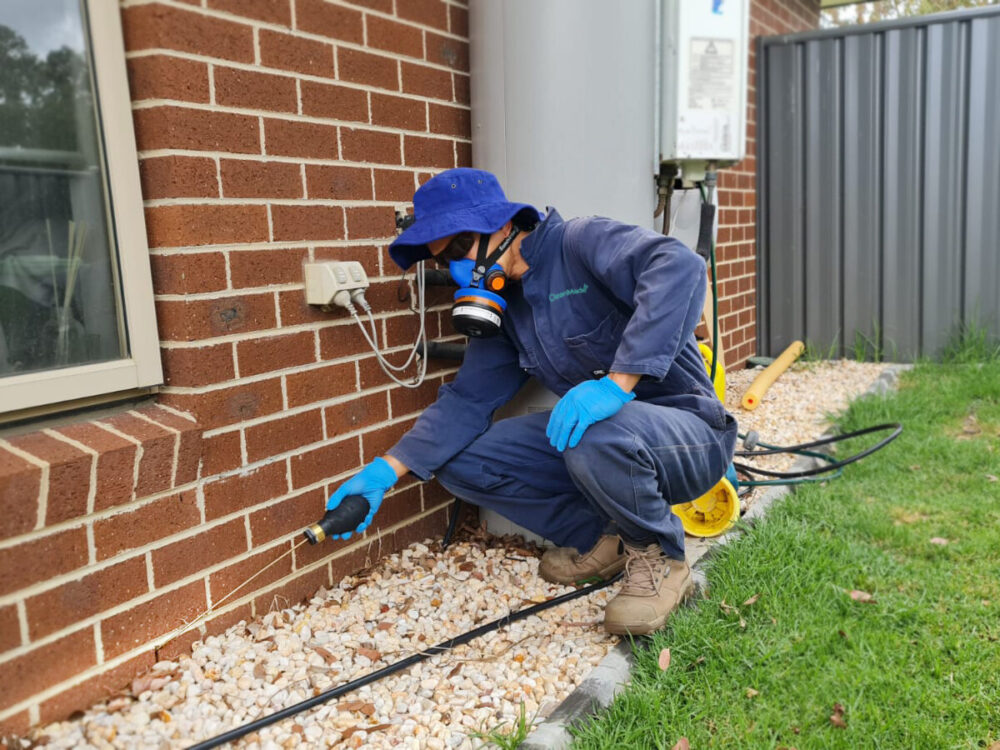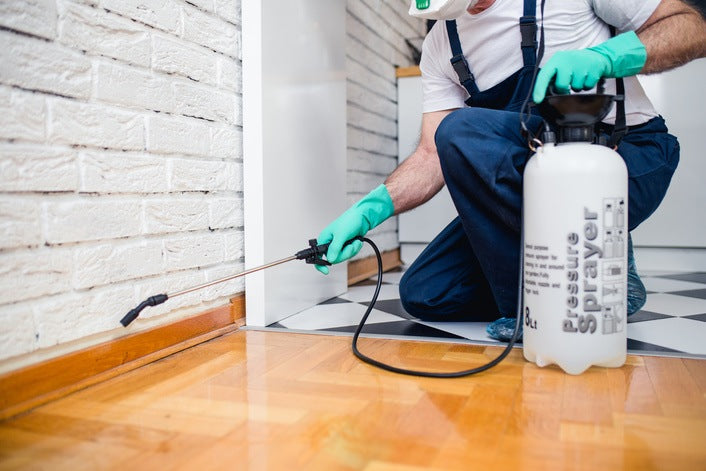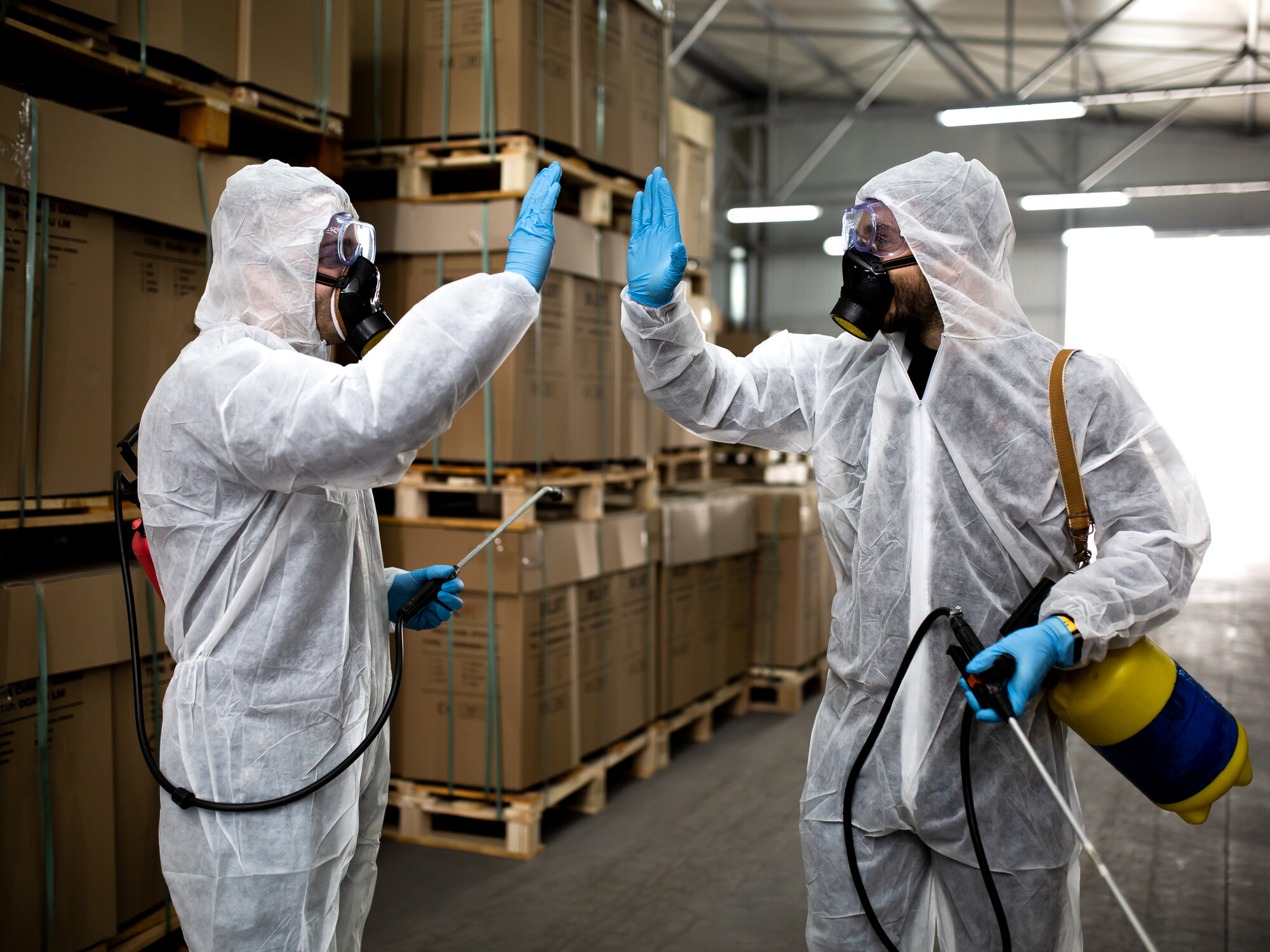Fighting Pests in Orem: Count On Our Pest Control Solutions for Satisfaction
Fighting Pests in Orem: Count On Our Pest Control Solutions for Satisfaction
Blog Article
An Understanding Into Various Types of Pest Control Solutions Available out there
In the realm of bug control services, a varied range of methods exists to deal with the persistent obstacle of taking care of unwanted burglars. From typical chemical sprays to cutting-edge biological controls, the market supplies a range of solutions designed to fit numerous needs and choices. As parasites proceed to adjust and develop, the requirement for effective and lasting pest control procedures comes to be progressively critical. Recognizing the nuances of each type of bug control solution can be not only informing yet also critical for preserving an unified conjunction with the setting and the creatures that occupy it.
Chemical Sprays
Chemical sprays are commonly utilized in insect control services to effectively eliminate and protect against problems. These sprays include numerous chemicals that target details pests, such as termites, insects, or rats. The active ingredients in these sprays work by interrupting the insects' nerve systems, triggering paralysis or death upon contact.
Professional pest control services use trained service technicians who understand the proper application of chemical sprays to ensure optimum performance while lessening dangers to humans, pets, and the setting. These technicians perform thorough inspections to identify the kind of bug infestation and identify the most ideal spray to attend to the issue.
One of the main benefits of using chemical sprays in pest control is their capacity to give instant results. Once used, the spray begins functioning rapidly, reducing the populace of insects in a timely way. Additionally, chemical sprays can supply resilient security against future infestations when used on a regular basis as part of a comprehensive bug management strategy.
Biological Control

Timeless biological control entails introducing all-natural enemies of the bug species right into the atmosphere. These natural opponents, such as pathogens, predators, or parasites, assistance control bug populations by victimizing or infecting them. This approach is often made use of for long-lasting insect management and developing an all-natural equilibrium in the community.
On the other hand, augmentative organic control involves launching multitudes of useful organisms, such as predacious bugs or nematodes, to manage existing pest populations. This method is extra instant and can be particularly valuable in farming settings to resolve existing pest infestations.
Organic control methods are favored for their environmentally friendly nature, very little influence on non-target varieties, and reduced chemical pesticide usage, making them a sustainable bug monitoring alternative for numerous industries.
Traps and Baits

On the other hand, baits are materials used to attract bugs to a specific place for control functions. Baits can be poisoned or non-poisoned, with infected lures being frequently used for insects like rodents, roaches, and ants. Non-poisoned lures are often utilized along with traps to entice pests right into the trap for capture. Proper positioning and choice of baits and catches are important for their efficiency, making them important tools in incorporated bug monitoring strategies. By recognizing the actions of the target insect, pest control professionals can efficiently utilize baits and catches to manage insect infestations efficiently - Orem Pest Control.
Integrated Parasite Management
Integrated Bug Administration (IPM) is a comprehensive strategy that integrates various pest control strategies Continue to properly manage and eliminate parasites while lessening ecological effect. IPM concentrates on long-lasting avoidance methods by thinking about the biology and habits of insects, as well as the details atmosphere in which they exist. This approach incorporates a range of parasite control techniques such as biological control, habitat manipulation, adjustment of cultural methods, and making use of immune crop click to read more ranges.
Among the essential concepts of IPM is to prioritize non-chemical bug control methods whenever possible. This might include utilizing all-natural predators to regulate pest populations or applying physical barriers to stop infestations. Chemical pesticides are made use of as a last resource and are applied deliberately to reduce injury to non-target organisms and the surrounding ecosystem.
Heat Treatment
As a corresponding method to Integrated Insect Administration strategies, heat therapy is a targeted strategy that harnesses the power of high temperatures to get rid of pests successfully and successfully. This method is particularly helpful in getting rid of bed insects, termites, and various other parasites that might be hiding in hard-to-reach areas within a structure. By raising the ambient temperature to degrees that are dangerous to the parasites yet secure for the structure, heat treatment can penetrate fractures, gaps, and furniture where standard chemicals may not reach.
One of the crucial advantages of warmth therapy is that it is chemical-free, making it a eco friendly and safe alternative for bug control. Additionally, warmth treatment is known for its capacity to offer fast results, frequently resolving parasite have a peek here invasions in a solitary treatment session.
Verdict

 Having actually dealt with the effectiveness of chemical sprays in bug control services, the emphasis currently shifts to organic control techniques as a sustainable choice for handling insect infestations. Baits and catches are vital devices in insect control solutions, providing targeted solutions for details insects. By understanding the actions of the target insect, pest control experts can effectively make use of baits and catches to manage parasite invasions successfully.
Having actually dealt with the effectiveness of chemical sprays in bug control services, the emphasis currently shifts to organic control techniques as a sustainable choice for handling insect infestations. Baits and catches are vital devices in insect control solutions, providing targeted solutions for details insects. By understanding the actions of the target insect, pest control experts can effectively make use of baits and catches to manage parasite invasions successfully.Integrated Insect Monitoring (IPM) is a detailed approach that integrates various bug control strategies to efficiently take care of and eliminate parasites while lessening environmental effect.In verdict, various kinds of parasite control services are offered in the market to address different bug problems.
Report this page